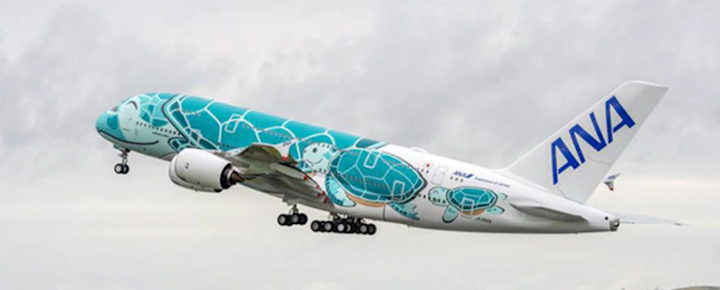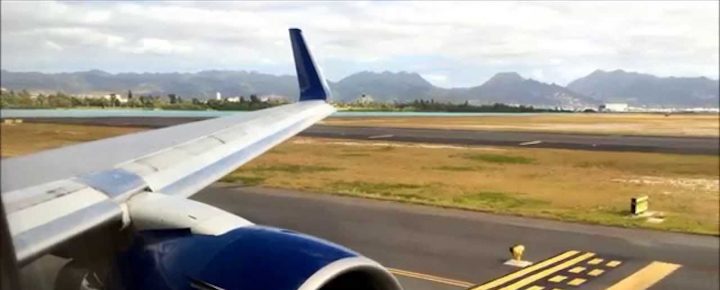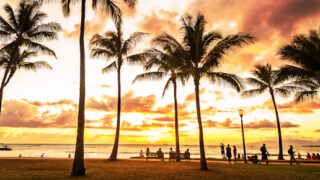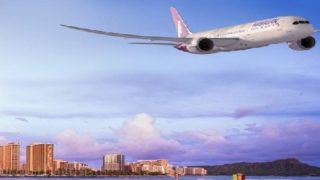Delta Airlines just announced that it will begin flights between Honolulu and Tokyo starting this fall. While seemingly insignificant for our U.S. travel visitors, nothing could be further from the truth. Putting it in perspective, Japanese visitors have to a large degree never returned to their beloved Hawaii since Covid, for a multitude of reasons. Normally there would be more than one and one half million Japanese visitors arriving in Hawaii annually. And it looks like that pace or more may be set to resume later this year.
Hawaii has had record-breaking domestic tourism this year, except for one element. And that is international tourists and more specifically Japanese visitors whose numbers have remained at just a fraction of normal.
Lack of international tourists offered some elasticity in Hawaii’s challenging travel environment.
Hawaii is still trying to cope with extremely limited resources in our travel sector. The lack of workers is a huge strain in terms of hotels, airlines, restaurants, and more. We’ve said before that you need to come prepared for this and it could be exacerbated by the return of international visitors. On Maui, for example, there are said to be 3,000 available hotel jobs that can’t be filled. Restaurants too remain challenged as noted here: Hawaii “Closed Without Notice” Signs Include Guy Fieri Find.
International arrivals will result in yet another level of record tourism.
One of several big obstacles to Japanese visitors has been the requirement to obtain relatively expensive Covid testing on return to Japan. That even though both the U.S. and Japan have curtailed most border restrictions. That comes at a time when Japanese visitors must also face a weakened Yen valuation, in addition to large $600 fuel surcharges. In addition, Japan has for now retained a cap on the number of arrivals into the country daily.
The state’s research arm (UHERO) said that the U.S. dollar is “20% higher than what it was a year ago. A Japanese visitor coming to Oahu, they not only have to pay whatever the increase is in the cost of their hotels and the cost of their flights here, but they also have to pay an additional 20% in yen because of that exchange rate.”
Prior to Covid Japanese arrivals were 1.6 million annually.


Delta Airlines Honolulu to Haneda starts December 1.
Delta said, “This is the first time Delta has offered service from Haneda to Honolulu with its start delayed due to the pandemic.” DL181 will leave Honolulu at 1:30 PM and arrive Haneda at 6:00 PM. The return flight leaves Haneda at 9:00 PM and arrives Honolulu at 9:00 AM.
“As travel restrictions gradually ease in Japan, we decided to restart the service from Los Angeles and Honolulu and increase the frequency of the flights currently operating flights to Haneda.”
Hawaii Airlines now has Japan flights to three airports, with three more routes pending.
Hawaiian Airlines is also now flying to Narita, Haneda, and Kansai. It isn’t clear if or when they will resume Japan flights from Fukuoka and Sapporo or the route between Kona and Haneda.
520-passenger ANA Flying Honu, JAL and Zipair have all returned to Hawaii.


Recently, ANA, Japan’s largest airline restarted its A380 service twice weekly from Tokyo’s Narito to Honolulu. It also flies from Haneda. One of the planes is pictured above on its delivery fight from the factory in Toulouse. Japan Airlines is also flying to both Honolulu and Kona. And Zipair is flying to Honolulu as well.
How can Hawaii handle even more visitors?
First, we don’t know how quickly international visitors will return. If what happened domestically is any indication, however, we’re guessing it will happen faster than anyone thinks. Without adequate staffing and infrastructure, what can we expect? Perhaps this is a place where Hawaii Travel Customer Service Is Dead. Here’s What’s Next will make somewhat more sense.
Get Breaking Hawaii Travel News







No, say it isnt so. For many reasons. Maui overcrowded now. Japan has their nerve. and as much as I hate that all countries including usa should go to screening visitors and reasons for being there, I think it is time. I am tired of foreigners ruining our country.
Aloha BoH I read the whole article. But I was wondering when there was going to be Japan flights to and from Kahului airport because it would bring more tourism to Maui and it would be a great first step for Japan route nonstop to Maui instead of Honolulu or Kona.
Hi Joshua.
We’ve not heard of any plans for a Tokyo to Maui route.
Aloha.
Just like Japan forces tourists to go in tour groups, we should force japanese tourists to do the same. Fair is fair.
I noticed an increase of Japanese and other foreign visitors on my trip about a week ago as compared to my trip in March.
Aloha BOH Folks,
In reading this article (and many like it these days it seems), one question I have not seen addressed (or I may have just missed it) is this: airlines can’t just unilaterally add flights to an airport without some sort of approval from some sort of oversight body (be it an airport agency, commission, or some entity like this). Some body has to ensure that all resources are in place for a likely successful outcome as a result of adding flights to an airport. Who is responsible for this in Hawaii and did that body issue any sort of statement with respect to these additional flights?
Thanks…Mahola!
Hi Warren.
From our limited understanding of that, it is complicated. The USDOT and the FAA are in charge, but the state DOT is the administrator of the airports. We’d love to hear from others who know more.
Aloha.
…as would I. Mahola for your thoughts on this..
Each airport has there own set of rules. So some have slot restrictions where gates are designated to specific airlines through contract agreements and bidding wars if others are interested. Other airports are open as a free for all first come first serve basis.
When flying from country to country, let’s say US and JPN. If there are open skies agreements, then any airline between the two are able to do as much flying between the two countries as they wish, as long as that airport they’re trying to land in has the room and or slots available based on that specific airports rules. If no open skies agreement is in place, then every individual flight coming in and out of that country must be studied and approved by each individual country.
Many native born Japanese who had work status in Hawaii returned to Japan when Covid started, and many who wanted to remain tried to do so but couldn’t as their jobs evaporated.
But Where did all those workers go? There wasn’t a labor issue before the pandemic was there? People living off the gov’t? Left Hawaii?
Where did they go?
Surely you realize the Mainland is also struggling in the service sector?? The Great Resignation isn’t unique to Hawaii, but as with all areas that rely on tourism, the lack of returning workers to hotel, retail, restaurant, and travel jobs is causing greater issues. These were jobs that typically offered few, if any, benefits and Covid hit them the hardest. Most of those workers took the opportunity to find better, more secure work and as an added bonus, not deal with nasty and demanding customers any more.
I echo that. My daughter was in the restaurant industry. Covid made her reevaluate her career. She is happy in a totally different field.
Many returned to their home countries. Living here is expensive, impossible when your employer closes for months. Hawaii had the lowest Covid numbers but it came at a cost.
That’s been my question ever since the worker shortage. I am baffled. How are previous service workers now supporting themselves? Left Hawaii is my guess. Maybe our BOH friends can shed some light.
Hi Bette.
The most likely thing we’ve heard is that hospitality workers went into other fields as they were dissatisfied with that industry.
Aloha.